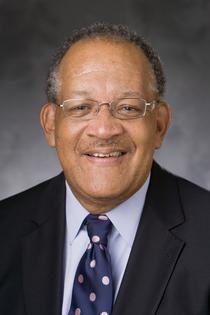Guest Post: Palliative Care in Oncology—We’ve Come a Long Way, Baby …But Let’s Not Rest on Our Laurels

Guest Post by Richard Payne, M.D.
“The good physician treats the disease; the great physician treats the patient who has the disease.” -William Osler
Since the creation of the National Cancer Act in 1971, the medical establishment—and indeed our entire society—has taken up the powerful metaphor of a “war on cancer” as the approach to attacking and overcoming this dreaded disease. This organizing metaphor and paradigm has the advantage of mobilizing intellectual, financial and a variety of human resources to attack cancer, and there have been many successes, and steady progress against what has been aptly described as the “Emperor of All Maladies.” However, one of the unfortunate aspects of fighting a war is the occurrence of “collateral damage”—unintended negative consequences of our efforts that are tolerated to achieve necessary ends. In this regard, the collateral damage that we have often inflicted on patients and families experiencing cancer is a denial of the physical, emotional and spiritual toll of the disease and its treatments. However, the emergence of palliative care—an approach to cancer care that addresses the physical, emotional and spiritual well-being of patients by focusing on open and honest communication, shared decision making , medically appropriate goal setting, and symptom management—has been a welcomed and effective response to the shortcomings in quality cancer care that are imposed by the limitations of the “war on cancer “ campaign.
At the initiation of the modern war on cancer in the 1970’s, it is fair to say that most oncologists were of the mindset that the best way to palliate is to cure. However, this philosophy is obviously compromised by the scarcity of curative options for most cancers, and minimizes the suffering imposed by treatments. Over the next decades, reports by the Institute of Medicine [1], [2] and the emergence of research and multidisciplinary care teams in cancer centers, with the goal of providing better pain and symptom management and general end-of-life care, emphasized palliative care as essential to quality cancer care. Responding to these trends and demonstrated needs, in 1998, The American Society of Clinical Oncology’s (ASCO) Task Force on Cancer Care at the End of Life affirmed that “a humane system of cancer care…is responsive to the patient’s wishes…is based on truthful, sensitive, empathic communication with the patient…optimizes quality of life throughout the course of an illness through meticulous attention to the myriad physical, spiritual, and psychosocial needs of the patient and family.” There are now several clinical trials attesting to the effectiveness of palliative care in oncology settings. Results include prolonged survival in patients with advanced lung cancer, improved patient satisfaction, lower costs and absence of harm. In 2013 ASCO issued a provisional clinical opinion calling for more complete integration of palliative care into standard oncology care.[3]
So, without question we have come a long way in the acceptance of the legitimacy of palliative care in oncology, and the need to expand access of this care to patients and families. Many, if not most of the comprehensive cancer centers now have palliative care programs in place. I now see the best and brightest of students and trainees in medicine and nursing electing to train and pursue careers in palliative care, and there are now academic role models in medicine and nursing schools to educate them. These are all wonderful developments and assure a bright future for the field, but most importantly for cancer patients who need and deserve this type of care. However, many challenges remain. Although the evidentiary base for the effectiveness of palliative interventions in oncology is growing, more basic, health service and comparative effectiveness research needs to be supported by the National Cancer Institute, The American Cancer Society, Patient Centered Outcomes Research Institute (PCORI) and other public and private agencies that fund oncology research. Palliative care skills and competencies such as basic management of pain and other physical and emotional symptoms common to cancer patients —and improved communication skills training in discussing prognosis, goals of treatment, etc. —must be integrated into the training of all oncologists so that they can integrate these skills into the primary practice of oncology.[4] To achieve the excellence in doctoring and caring that Sir William Osler’s quote describes, we must provide palliative care education and training integrated into oncology training, standardize the definition of palliative care as well as the tools for patient assessment, and make a commitment to ongoing evaluation of programs.[5] This is the way to sustain quality cancer care.
About the Author: Richard Payne, M.D. is the Esther Colliflower Professor of Medicine and Divinity at Duke Divinity School, Duke University. He is a graduate of Yale College and Harvard Medical School, and did post graduate training in internal medicine (Peter Bent Brigham Hospital), neurology (New York Hospital), neuro-oncology, pain management and palliative care (Memorial Sloan-Kettering Cancer Center). He has also served on the National Coalition for Cancer Survivorship (NCCS) Board. The views & opinions expressed in any guest post featured on our site are those of the guest author and do not necessarily reflect the opinions & views of the National Coalition for Cancer Survivorship. Read our blog and comment policies here.
[1] Approaching Death : Improving Care at the End of Life / Committee on Care at the End of Life, Division of Health Care Services, Institute of Medicine ; Marilyn J. Field and Christine K. Cassel, editors. National Academy of Science, 1997
[2] Improving Palliative Care for Cancer. Kathleen M.Foley and Hellen Gelband, Editors. National Academy of Science, 2003
[3] Smith T, Temin S, Alesi ER et al. American Society of Clinical Oncology Provisional Clinical Opinion: The Integration of Palliative Care into Standard Oncology Care. Journal of Clinical Oncology 2012;30:880-887.
[4] Quill TE, Abernethy AP. Generalist plus Specialist Palliative Care-Creating a More Sustainable Model. New Engl J Med 2013;368:1173-1175.
[5] Von Roenn JH, Voltz R, Serrie A. Barriers and Approaches to the Successful Integration of Palliative Care and Oncology Practice. Journal of the National Comprehensive Cancer Network 2013;11 (Suppl 1):511-516.



